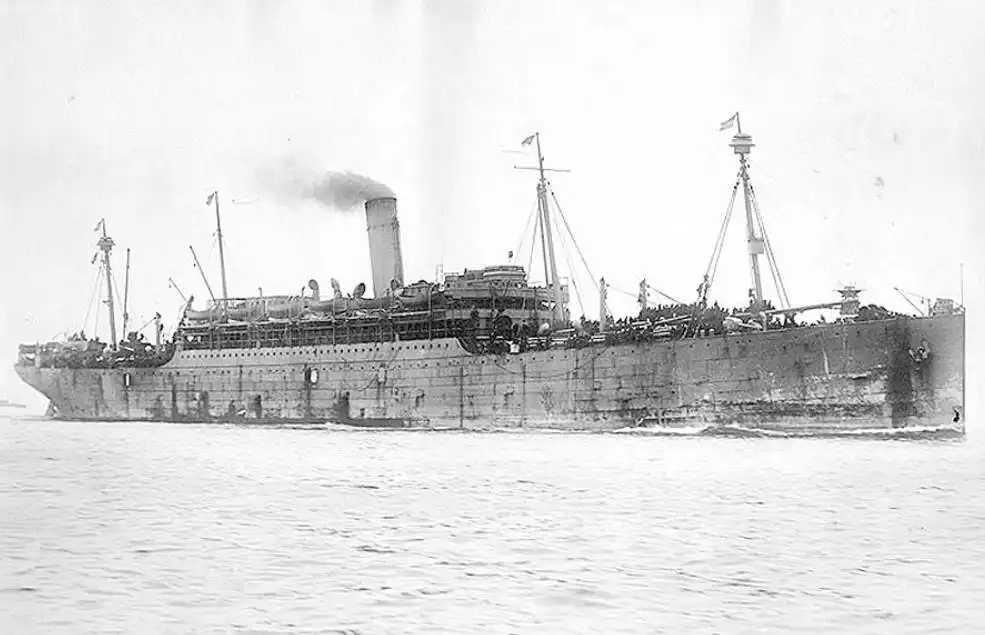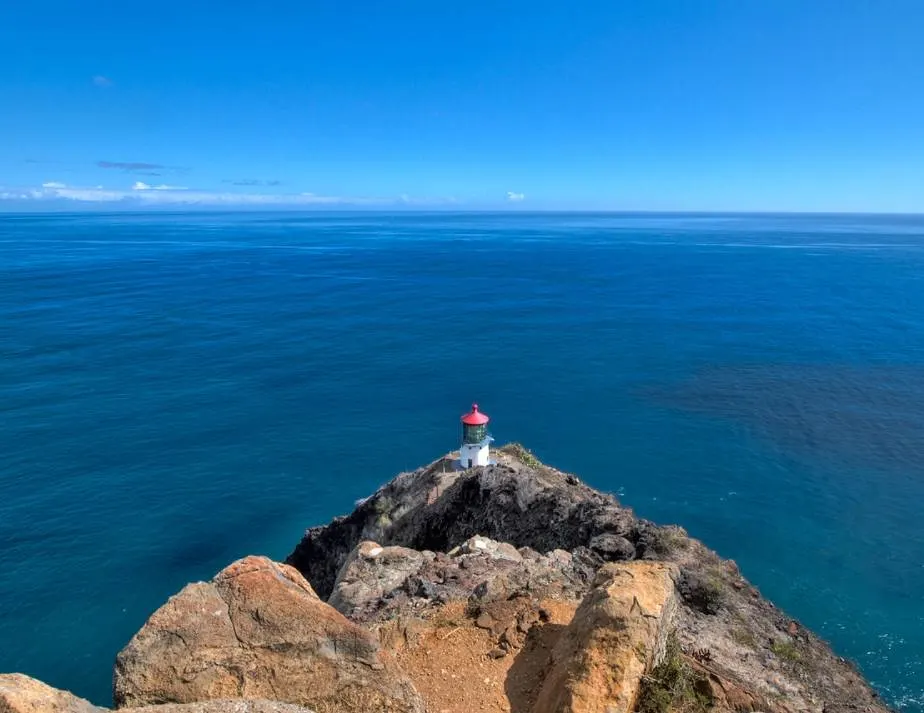The lighthouses built in antiquity, such as the now destroyed Lighthouse of Alexandria, were erected t mark the entrance of a port. The lighthouses built in modern times feature a lens that also allows the operators to warn ships for reefs or rocks.
One of the most fascinating lighthouses in the United States can be found on one of the islands of Hawaii in the Pacific Ocean.
In this article, you’ll discover some of the most interesting facts about the Makapuʻu Point Light, an important structure that has some interesting stories to tell.
1. It’s located near Honolulu on the third-largest of the Hawaiian Islands
The Makapuʻu Point Light is located on the utmost eastern point of O’ahu, the third-largest and most-populated island of the Hawaiian archipelago in the Pacific Ocean. That’s mainly because it’s home to Honolulu, the largest city and capital of the U.S. state of Hawaii.
Honolulu is just a few miles west of the lighthouse which is situated in one of the most amazing landscapes imaginable. But then again, this is Hawaii, a pretty awesome place full of natural wonders.
In between the eastern suburbs of Honolulu and the lighthouse you can find two enormous craters named Hanauma Bay and the Koko Crater, and the Sea Life Park of O’ahu is located just north of the lighthouse.

2. The need for a lighthouse on this point arose in the late 19th century
The name “Honolulu” translates to either “sheltered harbor” or “calm seaport.” The exponential growth of the city since the late 19th century made it everything but a calm seaport as traffic from the east gradually grew as well.
All the traffic from the West Coast of the United States makes landfall in this dangerous area full of cliffs and rock outcrops. The first petition to make the eastern tip of O’ahu safer for the arriving ships was submitted in 1888.
It wasn’t until Hawaii was annexed by the United States in 1898 that these initial plans were materialized into serious inquiries. The lighthouse was eventually constructed well over a decade later in 1909 and was activated that same year.

3. It has the largest lens of any lighthouse in the United States

The planning stage to build the lighthouse was so long that multiple lenses were proposed, including a third-order, second-order, and first-order Fresnel lens.
The lens that was chosen for the Makapuʻu Point Light was neither of these as it features a hyper radiant Fresnel lens. This type of lens was first developed by the Chance Brothers Glass Company in the UK in 1887.
The lens has an intensity of 115,000 candlepower and has a range of 19 miles (31 kilometers). It has over 1,000 prisms and stands 12 feet (365 centimeters) tall, making it the largest lens in the United States.

4. It’s one of the highest lighthouses in the country as well
Although the tower in which the lens was placed only stands 46 feet (14 meters) tall, the structure is still the most distinctive landmark in the area. That’s because it was built high on top of a volcanic outcrop on the utmost eastern tip of O’ahu.
The cylindrical white lighthouse with a red roof and lantern has a focal height of 420 feet (130 meters), the second-highest in the United States.
Today, only the Old Point Loma Lighthouse on the Point Loma peninsula in San Diego stands taller at 462 feet (141 meters). This lighthouse, however, isn’t active anymore and only serves as a museum.

5. The lighthouse can be reached via a popular hiking trail
The lighthouse is part of the Kaiwi State Scenic Shoreline and can be reached via the Makapuʻu Point Lighthouse Trail, a very popular hiking trail on the island of O’ahu.
Although this trail only has a length of approximately 2 miles (3.21 kilometers), it offers astounding views of both the lighthouse and the area surrounding Makapuʻu Point.
An elevation gain of about 500 feet (152.4 meters) and the lack of shade on the volcanic rocks make the roundtrip a decent exercise as well. The view of the historic lighthouse against the deep blue sea makes it all worthwhile, don’t you think?

More interesting facts about the Makapuʻu Point Light
6. The first choice of lens was a third-order Fresnel lens that was on display at the World’s Columbian Exposition in Chicago in 1893. Another lens on display at this exhibition was one used at the Spectacle Reef Light in the northern part of Lake Huron.
Because it took so long between the planning phase and the actual construction of the Makapuʻu Point Light, the only lens available at the time was the massive hyper radiant Fresnel lens.
7. A bill was passed by the United States House of Representatives on June 10, 1906, allocating $60,000 for the construction of the structure. Just 2 months later, the need to build a lighthouse became urgent when the $2,500,000 USS Manchuria ran aground off Makapu’u Point.
The ship was repaired in just two months and was only scrapped in 1952. The irony about this incident is that the owners of this ship had signed the petition in 1888 to build a lighthouse on Makapu’u Point.

8. The lighthouse has been the cause of some great tragedies as well. A Japanese ship named “Izumo” was unaware of its existence and remained offshore until daylight. A British ship named Helga mistook it for the lighthouse on Diamond Head and ran aground shortly after.
The worst incident happened on April 25, 1925. One of the keepers lit the three-mantle oil vapor lamp with the required alcohol burner. The moment he lit the match, an explosion happened after some of the alcohol had spilled. The keeper died of his wounds the following day.
9. Two years after this tragedy happened, a radio beacon was installed near the lighthouse and the vapor lamp was replaced with a 500W incandescent bulb.
This radio was active until the early 1970s and removed shorty and the lighthouse was finally fully automated in the year 1974.
10. The hiking trail leading up to the lighthouse has been greatly improved since 2001. That’s because the State of Hawaii paid $12.8 million for the land surrounding Makapu’u Point that year.
They didn’t just build a parking lot at the beginning of the filing trail after the acquisition but will also ensure that this magnificent piece of nature will remain free from development forever.

